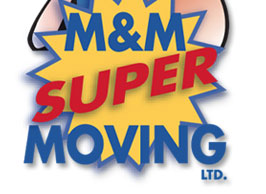How To Safely Move With Your Parrot

According to the American Veterinary Medical Association (AVMA), approximately 3.1% of residential homes in the U.S. have at least one pet bird. If you are the proud owner of a parrot and plan on moving in the near future, there are a few things you should know to make the process safer and more enjoyable for your feathered friend. Whether it’s a large Macaw or small parakeet, all parrots are creatures of habit, and abruptly displacing them from their normal environment can lead to emotional and/or physical health problems.
It’s recommended that you inspect your new residence ahead of time to ensure it’s suitable for your parrot. Parrots have delicate respiratory systems and airborne pollutants like dust, mold, bacteria, smoke and volatile organic compounds (VOC) may cause irritation. If the residence is visibly dirty, clean it before retrieving your parrot.
After cleaning your new home, bring your parrot over to let them grow accustomed to the new environment. You don’t have to spend the entire day there, as a short 30-minute session should suffice. Just remember to keep your parrot confined to their cage to prevent them from escaping or flying away. Exposing your parrot to its new home will make the move a little easier for the both of you.
Many owners unknowingly have toxic household plants around their parrots. Even if a plant isn’t toxic to humans, it may still prove deadly when consumed by a parrot. For this reason, it’s recommended that you go through all of the plants before you move to determine their toxicity levels to parrots. A simple online search for the plant’s name should reveal whether or not it’s toxic to pet birds.
Another highly toxic element that owners should be aware of is Teflon. Pots, pans and other cookware coated in this material are deadly when used in the presence of a parrot. If you receive a set of Teflon-coated cookware as a housewarming present, do not attempt to use it. Once heated, it will emit fumes that are toxic and potentially deadly to parrots.
The secret to having a smooth move with your parrot is to avoid making significant changes to their normal routine. In other words, you should continue feeding your parrot at the same time, using the same brand of food, and keeping your parrot in the same cage with the same toys. You can always change your parrot’s routine later, but it’s recommended that you wait until the move is over to do so.
Our team of moving professionals specialize in making your move as easy and stress-free as possible and we would love to help with your next move. Get a free online moving quote today.
Read more tips on moving with pets here.
Comments Off on How To Safely Move With Your Parrot





